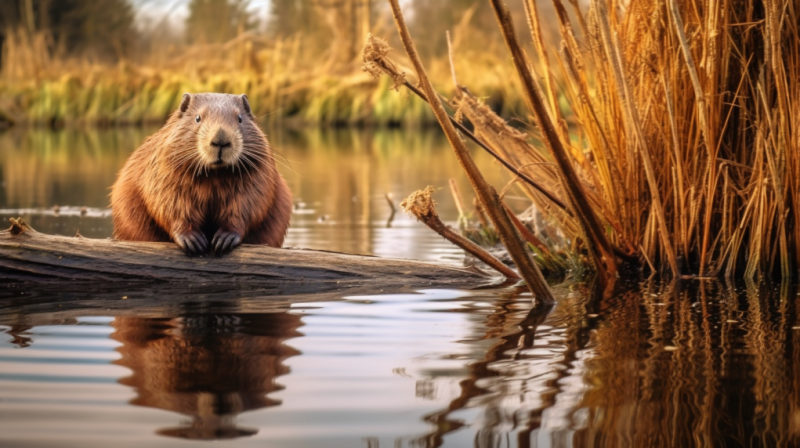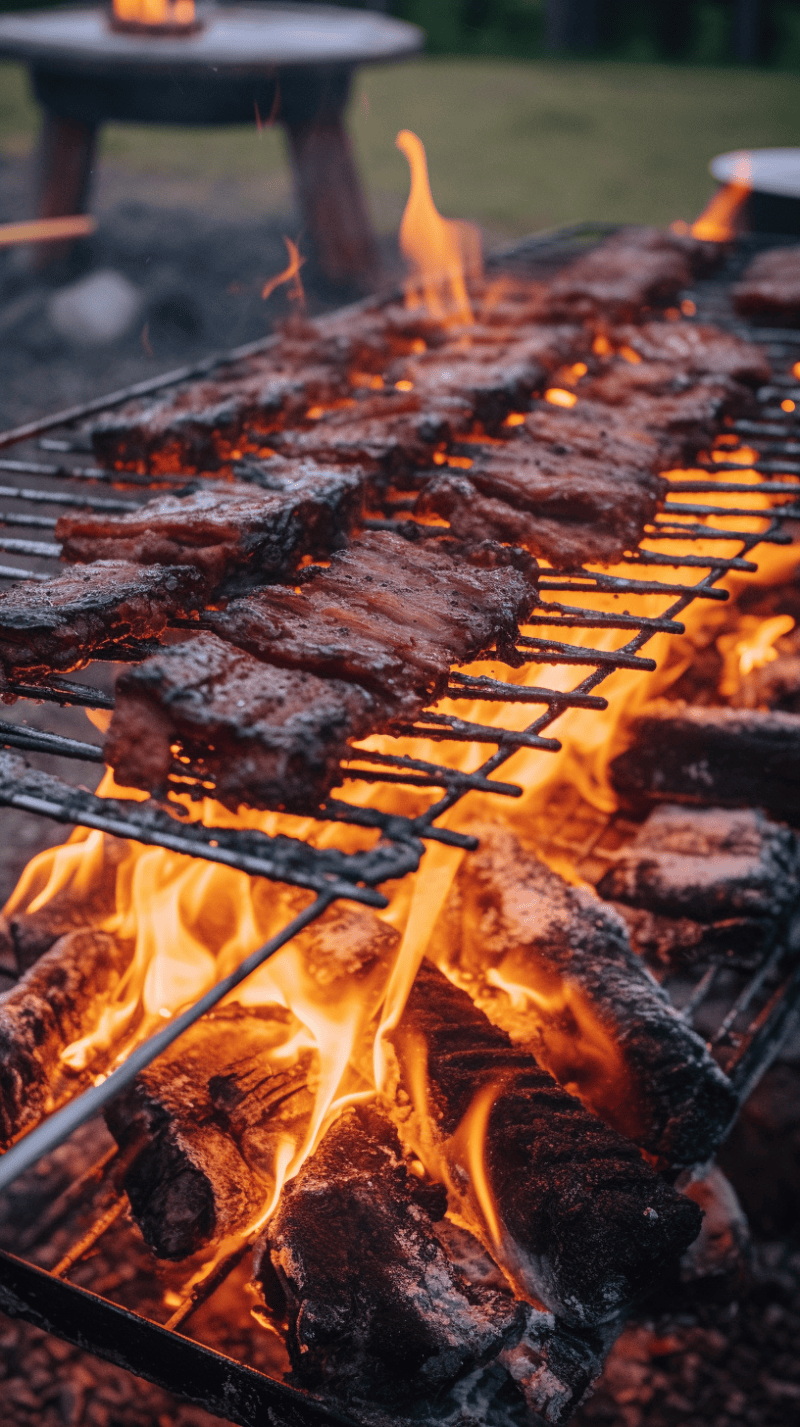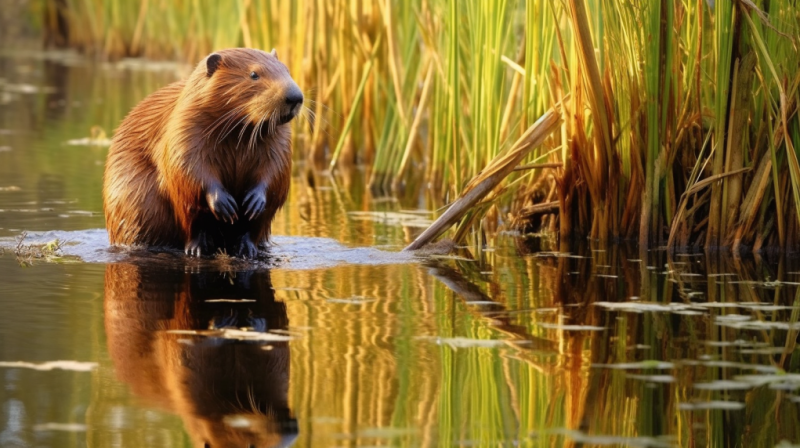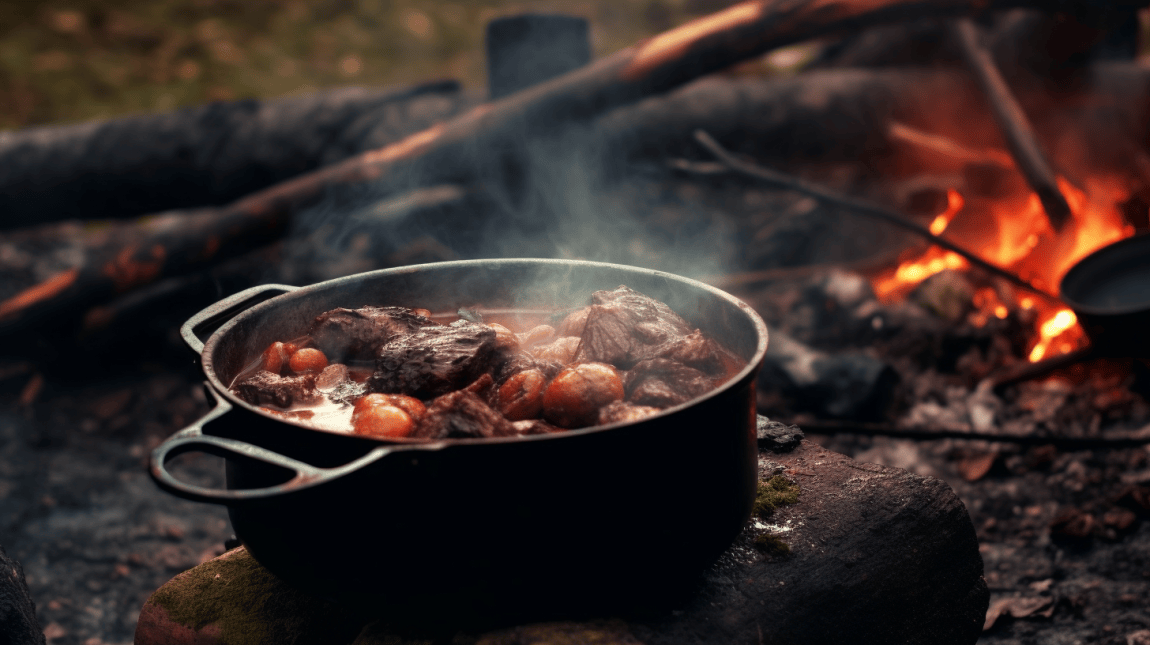In the realm of unusual culinary delights, beaver meat has made something of a splash. When prepared properly, beaver meat can be a safe to eat, healthy, game meat, that might be the perfect thing for your next game meat dinner. That's right! A number of men (and women) actually savor this unconventional red meat for its unique flavors and surprising health benefits. Despite raising many eyebrows, it's neither a modern fad nor an odd survivalist regime - people have been consuming beaver meat diligently for centuries across North America.
Yet, not everyone is familiar with this aquatic animal as foodstuff.
Key Takeaways
- Consuming beaver meat is safe and legal as long as hunting regulations are followed and proper food safety and hygiene practices are maintained.
- Beaver meat offers a unique flavor profile, described as gamey yet slightly sweet, with a tender texture that holds up well across various cooking methods.
- Beaver meat is rich in essential nutrients such as protein, vitamins, minerals, iron, and vitamin A, making it a healthy choice when consumed as part of a balanced diet.
- When cooking beaver meat, slow cooking methods like braising or stewing are recommended to ensure tenderness. Grilling, roasting, stir-frying, and incorporating beaver meat into sausages or burgers are also popular options. Experimentation with seasonings and flavors can enhance the natural taste of beaver meat.
I remember the first time I helped field dress a beaver and prepare the fur. At the time we didn't think much about the idea of eating the meat. Today though, while I'm am avid supporter of fishing, hunting, and responsible harvesting of animals - I also believe that we need to do so in a way that connects us back to the core values of our ancestors. Early settlers, Indians, and other populations that lived in what we now call Canada and the United States would hunt out of necessity but they made sure to consume everything that they caught. 
History Of Eating Beaver In North America
Beaver meat has been a part of North American cuisine for centuries, with Native Americans and European settlers alike enjoying the savory flavor. Beaver was once abundant in North America, but as the demand for its fur increased, so did the pressure on its population. What once was a common and easy to trap animal that was a blessing in a survival situation rapidly turned into an industry that wiped out many beaver species completely.
The North American Beaver (Castor canadensis) was once found in virtually all aquatic ecosystems in North America, from the Arctic tundra to the deserts in northern Mexico. Before European settlers arrived, it is estimated that beavers numbered in the many millions. They were a keystone species responsible for creating wetlands by building dams from trees and branches, which had a significant impact on the environment.
Beavers are semi-aquatic herbivores and travel from water to land to collect and eat tree bark, leaves, roots, and wetland plants. Adults can be up to four feet long and weigh over 60 pounds. As the population continues to recover, the positive impacts on the environment, including wetlands preservation, improved habitat for migratory birds, and better water quality for freshwater fishing continues to improve the natural spaces we all enjoy.
Some Catholics even suggest that eating beaver is ok during Lent since the bible didn't distinguish between "fish" and "mammels" only "of the sea" and "of the land" ... as such, eating beaver is one of those liturgical loopholes that some folks like to exploit and we're not opposed to that creativity!
While beaver meat is not a common protein today due rarity of the animal in certain areas. These aquatic mammals were extremely close to extinction by the 17th century. Beaver had become a valuable commodity in North America and was hunted extensively for its fur and meat. This led to a rapid decline in the beaver population, which was further exacerbated by overhunting and habitat destruction. Today, beaver is still eaten in some parts of North America, but it is considered an endangered species due to its dwindling numbers.
Is It Safe And Legal To Consume Beaver Meat?
Consuming beaver meat is both safe and legal, as long as hunting regulations are followed and proper food safety and hygiene practices are maintained.
Understanding Hunting Regulations
Beaver hunting, as with any form of game hunting in the United States, is governed by specific regulations to ensure ethical and sustainable practices. These rules vary state by state depending on beaver population densities among other factors.
For instance, many places categorize beavers as furbearers that can be legally trapped or shot with a proper license.
The concept may seem daunting at first glance but understanding these laws isn't rocket science. Take Montana for example; there, an annual trapping season stretches from November to mid-April - prime time for procuring fresh beaver meat! Each trapper requires a Furbearer Trapping License which can easily obtained online or via authorized dealers.
Keeping Beaver Meet Safe: Food Safety And Hygiene
Ensuring food safety and hygiene is a crucial step when preparing beaver meat for consumption. Many of these steps are similar or the same whether you are preparing rabbit meat, elk meat, or deer meat. Simply put, processing wild game is something that you can leave to the professionals or do yourself if you have the proper tools, experience, and time to prepare the meat properly. While the easiest and best way to process a whole beaver is to take it to a game meat processor in your local area.
Similarly, most exotic meat market locations will be able to provide guidance in the preparation of wild game meat to ensure that it is preserved properly and safe for human consumption.
- Verify the source: Trust only reputable local game meat suppliers, online retailers or specialty markets to buy fresh beaver meat. They ensure that their supplies follow all safety and hygiene standards.
- Cleaning the carcass: Clean the beaver carcass thoroughly, removing all unwanted blood and other contaminants from the skin and internal organs. This protects against potential health dangers, including those related to heavy metals.
- Removal of castor glands: The castor sacs in beavers are used to mark territory with a strong scent - consuming these glands can taint the taste of beaver meat and can also be risky for health.
- Use salt water: A good idea is to soak the meat in salt water before cooking; this process helps to mitigate potential risks of contaminant exposure.
- Proper cooking method: Ensure you cook your wild beaver meat at a safe internal temperature, similar to other game meats like elk or rabbit. Consuming undercooked or raw game meat poses serious health risks.
- Prevent contamination: Handle your fresh beaver meat with clean hands and utensils to prevent cross-contamination with other foods.
- Store properly: If not cooked immediately, the fresh beaver meat needs refrigeration at safe levels to avoid pathogenic growth which can lead to food-borne illnesses.
By following these steps diligently, you're not only ensuring that your wild game meal is delectable but also protecting yourself from potential health hazards associated with improperly prepared wild animal meats.

The Culinary Appeal Of Beaver Meat
Beaver meat offers a unique culinary experience with its flavorsome and tender qualities, making it a popular choice among adventurous food enthusiasts. The exotic nature of consuming small game through specialty retailers and passing recipes down from man to man also adds to the appeal of eating game like freshly harvested beaver meat vs store-bought meat like beef, chicken, or pork.
Unique Flavors And Textures
Beaver meat boasts a distinct profile that sets it apart from other game meats. Beaver meat's taste is often described as gamey yet slightly sweet. Its woody undertone is truly unique, reflecting the beaver's own diet of tree bark and aquatic plants.
The texture of beaver meat further enhances its appeal. Similar to pork, but a bit chewier, it possesses a firm but tender feel that holds up well across various cooking methods.
But what many find intriguing is the coveted beaver tail - a delicacy relished by many gourmet adventurers. Contrary to the lean nature of the body meat, the tail of the beaver is rich with high-fat content adding an indulgent dimension to its taste and texture when cooked properly. As you might expect, this means that beaver tails are an excellent source of omega-3 fatty acid, something that is rare to find among other red-meats.
In essence, each part of this aquatic mammal offers a different sensory journey: from lean red meat reminiscent of grass-fed beef or dark-meat chicken in muscular parts to fatty goodness akin to marbled cuts in its tail region.
Nutritional Value And Health Benefits
Beaver meat is not only a unique culinary option, but also rich in essential nutrients that offer significant health benefits.
| Nutrient | Value | Health Benefit |
|---|---|---|
| Protein | High | Protein is essential for growth, repair, and maintenance of body tissues. It also helps in boosting immunity and producing enzymes and hormones. |
| Fat | Low | Low-fat meats like beaver help in maintaining a healthy weight and reducing risk of heart disease and other health issues related to high fat intake. |
| Vitamins and Minerals | Abundant | Vitamins and minerals are crucial for various bodily functions, including maintaining healthy skin, bones, and teeth, boosting immunity, and aiding digestion. |
| Iron | Good source | Iron plays a vital role in red blood cell production and oxygen transportation in the body. It also contributes to energy production and maintaining a healthy immune system. |
| Vitamin A | Good source | Vitamin A is essential for vision, growth, cell division, reproduction and immunity. It also helps the heart, lungs, kidneys, and other organs to work properly. |
Despite being high in cholesterol, beaver meat is still considered a healthy option due to these nutritional benefits. As with any meat, it's best consumed as part of a balanced diet.
Cooking And Preparing Beaver Meat
Cooking and preparing beaver meat involves cleaning and dressing the meat, exploring different cooking methods and recipe ideas, as well as experimenting with seasoning and flavor options.
Cleaning And Dressing The Meat
To prepare beaver meat for cooking, it is important to properly clean and dress the meat. Here are the steps to follow:
- Start by removing the skin: Using a sharp knife, make an incision along the belly of the beaver from the tail to the neck. Carefully peel back the skin, working your way around the body. Take caution not to puncture any internal organs.
- Remove the internal organs: Once you have removed the skin, carefully remove the internal organs. Cut away any excess fat and discard them. It's important to properly handle and dispose of these parts as they may contain contaminants.
- Rinse thoroughly: After removing the internal organs, rinse the beaver meat under cold running water to remove any remaining blood or debris.
- Trim excess fat and connective tissue: Using a sharp knife, trim off any excess fat or connective tissue from the meat. This will help improve its texture and taste.
- Pat dry: Gently pat dry the cleaned beaver meat using paper towels or a clean cloth.
- Store or proceed with cooking: At this point, you can either store the cleaned meat in proper food storage containers in the refrigerator or proceed with your chosen cooking method immediately.
Remember to always practice good hygiene when handling raw meat, wash your hands thoroughly before and after handling it, and follow safe food handling practices to prevent cross-contamination.
Cooking Methods And Recipe Ideas
Cooking beaver meat requires some knowledge and skill to bring out its unique flavors and ensure it is tender. Here are some cooking methods and recipe ideas to help you make the most of your beaver meat:
- Slow Cooking: Beaver meat is known for being tough if cooked quickly, so slow cooking is often the best method. This allows the meat to become tender and juicy. Try braising or stewing beaver meat in a slow cooker or Dutch oven for several hours until it easily falls off the bone.
- Grilling: For a tasty twist, consider grilling beaver meat over low heat. This method adds a smoky flavor and caramelizes the meat's natural sugars. Marinate the meat beforehand with your favorite herbs, spices, and a splash of citrus juice for added tenderness and flavor.
- Roasting: Another popular option is roasting beaver meat in the oven. Start by seasoning the roast with salt, pepper, garlic powder, and herbs like rosemary or thyme. Place it on a rack in a roasting pan and cook at a low temperature (around 325°F) until it reaches an internal temperature of 145°F for medium-rare or 160°F for medium doneness.
- Sausages and Burgers: Ground beaver meat can be transformed into flavorful sausages or burgers. Combine it with your choice of seasonings such as onions, garlic, herbs, or even spices like paprika or cayenne pepper. Shape into patties or stuff into casings for homemade sausages.
- Stir-Frying: For a quick and easy option, cut beaver meat into thin strips and stir-fry with your favorite veggies and sauces. The tender strips will absorb flavors well while retaining their own unique taste.
- Traditional Preparations: If you're feeling adventurous, explore traditional recipes that incorporate beaver meat from various cultures. For example, Native Americans used to cook beaver meat with wild berries, herbs, and even maple syrup for a sweet and savory dish.
Remember to always cook beaver meat thoroughly until it reaches a safe internal temperature. Enjoy the natural flavors of this unique meat while experimenting with different ingredients and seasonings to suit your taste preferences.

Seasoning And Flavor Options
When it comes to seasoning and flavoring beaver meat, there are plenty of options to enhance its natural taste and create a delicious dish. One popular choice is to marinate the meat overnight in a blend of herbs and spices, such as rosemary, thyme, garlic, and black pepper.
This not only adds depth of flavor but also helps tenderize the slightly chewy texture of beaver meat.
Another way to bring out the unique qualities of beaver meat is through slow cooking methods. Braising or stewing the meat allows it to become tender while infusing it with rich flavors from vegetables and broth.
In terms of pairings and side dishes for beaver meat, consider serving it alongside roasted root vegetables like potatoes or parsnips for a comforting meal. The earthiness of mushrooms can also complement its slightly woodsy flavor well.
Overall, experimenting with different seasonings and cooking techniques can help you discover what works best for your palate when preparing beaver meat as part of a delicious meal experience.
Sourcing And Buying Beaver Meat
When it comes to sourcing and buying beaver meat, you have a few options available.
Local Game Meat Suppliers
Finding local game meat suppliers is a great option for those seeking to enjoy the unique flavors of beaver meat. Many regions have specialty butcher shops or farmers markets that offer a variety of wild game meats, including beaver.
For example, in certain areas in North America where hunting seasons are regulated, hunters can sell their harvested beavers to local game processors who then distribute the meat to various outlets.
By supporting these local businesses, consumers not only gain access to fresh and high-quality beaver meat but also contribute to the conservation efforts as many of these suppliers follow strict regulations on wildlife management.
Online Retailers And Specialty Markets
For those interested in trying beaver meat, online retailers and specialty markets can be a convenient source. Many exotic meat markets now offer ground beaver meat specifically, making it accessible to a wider audience.
These online retailers provide the convenience of purchasing from home and often have detailed information about the sourcing and quality of their products. Additionally, specialty markets that focus on wild game meats may also carry beaver meat as part of their selection.
It's important to note that when buying online or from specialty markets, researching the reputation and credibility of the seller is crucial. Look for retailers who prioritize ethical sourcing practices and adhere to strict food safety regulations.
Overall, online retailers and specialty markets offer a convenient way to experiment with different types of game meats like beaver while ensuring freshness and quality through reputable sources.
Ethical And Sustainable Sourcing Considerations
Ethical and sustainable sourcing is an important consideration when it comes to buying beaver meat. Indigenous peoples, who have a long history of utilizing beavers as a food source, prioritize sustainability in their practices.
To support ethical sourcing, consumers can look for local game meat suppliers or online retailers that specialize in wild game meats.
Additionally, some specialty markets focus on ethically sourced and organically raised exotic meats, including beaver.
By choosing to purchase beaver meat from these sources, consumers can enjoy this unique culinary experience while supporting responsible sourcing practices.
Conclusion
In conclusion, it is clear that many men have a love for eating beaver, while others aren't sure what to expect until they dive in and try beaver for the first time. Personally, I encourage men to try exotic foods and try new things. While elk and venison might seem exotic to some folks, I'm a big fan of pushing the envelop with even more unique options when it comes to tasty animal proteins. This is even more important when it comes to restoring connections with traditional food sources.
After all, our ancestors - the great men who settled this continent survived not just on trapping beavers and selling the fur - but by by eating the meat for survival too. This is your opportunity to follow in their footsteps and could even be part of a pioneer-themed guys trip if you want to take things a bit farther.
So go ahead – embrace your inner epicurean adventurer and delve into the world of delightful beaver cuisine!
